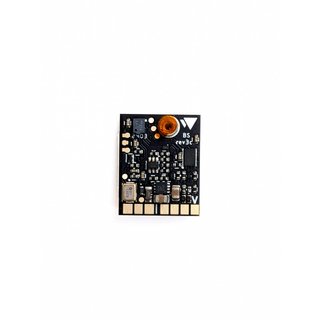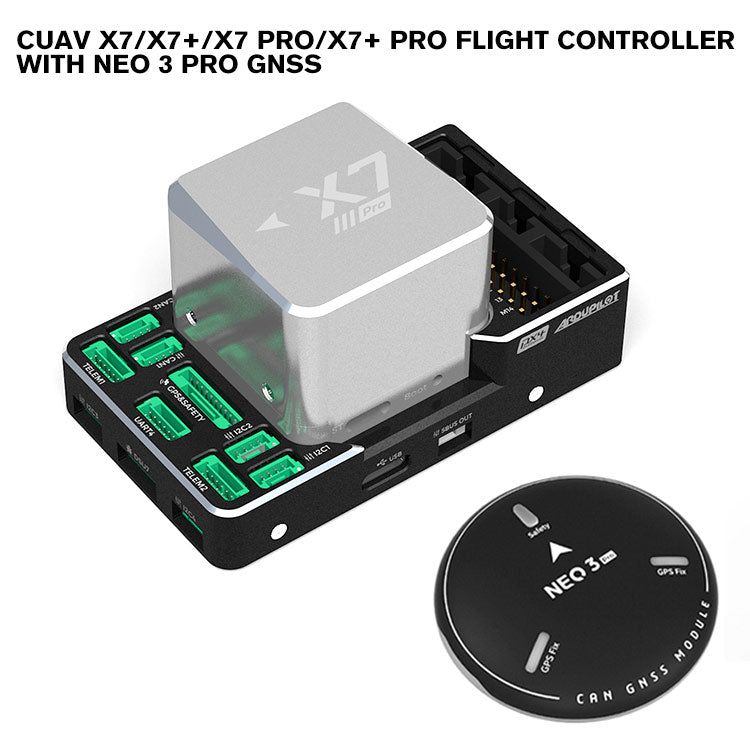SparkNavi Drone Flight Controller and GNSS/INS Made in Taiwan: Precision and Advancement
SparkNavi Drone Flight Controller and GNSS/INS Made in Taiwan: Precision and Advancement
Blog Article
The Value of Drone Trip Controllers in Modern Aerial Technology: Key Elements and Their Influence
In the realm of modern-day aerial innovation, drone trip controllers offer as the essential systems that manage a drone's performance and abilities. As sectors increasingly depend on drones for applications varying from farming to security, the progressing innovation within trip controllers elevates vital questions concerning their future impact and potential innovations.

Introduction of Drone Flight Controllers
In the realm of aerial innovation, drone flight controllers serve as the crucial brain of unmanned airborne automobiles (UAVs), enabling precise ability to move and security during trip. These sophisticated systems incorporate sensing unit data, refining formulas, and control inputs, permitting drones to perform complicated trip patterns with precision.
Drone flight controllers make use of various sensors, such as gyroscopes, accelerometers, and GPS components, to assess the UAV's alignment and setting in real-time. This details is necessary for maintaining balance and making certain risk-free operation in diverse ecological problems. The controllers process this data to make instantaneous adjustments to the drone's electric motors, enabling smooth changes and receptive handling.
In addition, flight controllers are equipped with sophisticated software that sustains functions such as waypoint navigation, barrier evasion, and independent trip capacities. This software application is essential for both recreational and industrial applications, where reliability and accuracy are critical. As drone modern technology proceeds to development, the evolution of flight controllers will play a critical duty in improving UAV convenience, capability, and safety and security, eventually expanding their applications across numerous industries.
Key Elements Explained
Recognizing the fundamental elements of drone flight controllers is crucial for realizing just how these systems run effectively. At the heart of a flight controller is the microcontroller, which serves as the brain, refining information from different sensing units and executing commands. Necessary sensors consist of accelerometers and gyroscopes, which measure the drone's alignment and movement, giving important feedback for stabilization.
An additional secret element is the barometer, which gauges altitude by determining air pressure, while GPS components supply positional data, allowing independent navigation - SparkNavi drone flight controller and GNSS/INS made in taiwan. The trip controller likewise interfaces with Digital Rate Controllers (ESCs), which manage the speed of the drone's motors based on the controller's commands
Communication modules, such as radio receivers, help with push-button control input, enabling drivers to send out commands in real-time. Furthermore, some flight controllers integrate software program that can take care of intricate formulas for waypoint navigating, flight planning, and telemetry information analysis.
Duty in Flight Stability
Central to keeping flight stability, drone flight controllers make use of advanced algorithms to process sensor information and make real-time modifications. These controllers are equipped with an array of sensing units, consisting of accelerometers, measures, and gyroscopes, which continuously keep an eye on the drone's elevation, speed, and alignment. By analyzing this data, the flight controller can recognize inconsistencies from the preferred flight path and respond immediately to maintain stability.
For circumstances, if a drone experiences an unforeseen gust of wind, the flight controller can promptly readjust the motor rates to neutralize the disturbance, making certain a consistent flight trajectory. This capacity is critical not only for manual flight procedures but likewise for implementing complicated maneuvers and keeping smooth trip in different ecological problems.
.png)
Moreover, the sophisticated algorithms made use of in flight controllers, such as PID (Proportional-Integral-Derivative) control, enable for fine-tuning of the drone's feedback to modifications in trip problems. By maximizing these control specifications, trip controllers can improve stability, boost responsiveness, and decrease pilot workload. Ultimately, the duty of trip controllers in making certain flight security is vital for the risk-free and effective procedure of modern drones throughout diverse applications.
Influence On Autonomous Procedures

Autonomous procedures are find out here now particularly vital in varied applications such as monitoring, farming, and delivery services. With enhanced flight controllers, drones can autonomously browse established paths, successfully gather data, and adjust to dynamic environments. This ability lowers the need for continuous human oversight, therefore raising operational performance and security.
Moreover, the application of maker knowing methods within flight controllers makes it possible for drones to improve their performance over time by discovering from previous missions. This flexibility paves the method for extra advanced independent applications, such as flock modern technology, where numerous drones coordinate their actions to achieve a common goal.
Future Trends in Trip Controllers
Innovations in trip controller modern technology are poised to reinvent drone capacities in the coming years. One considerable fad is the integration of expert system (AI) and equipment learning algorithms, allowing drones to pick up from their atmospheres and make real-time choices. This advancement will certainly boost autonomous navigating, challenge avoidance, and mission preparation, significantly improving functional performance and security.
Furthermore, the growth of innovative sensor technologies, such as LiDAR and multispectral imaging, her explanation will give flight controllers with richer data inputs. This will assist in more advanced logical capacities, enabling drones to conduct complicated jobs, such as precision farming, rescue and search, and facilities evaluations with extraordinary precision.
One more arising trend is the miniaturization of trip controller parts, which will lead to lighter and more small drones. This advancement will certainly prolong flight periods and haul capacities, making drones a lot more functional for numerous applications.
Final Thought
To conclude, drone flight controllers act as vital elements in modern-day aerial technology, making sure stability and precision in maneuverability through the integration of microcontrollers, accelerometers, and GPS components. SparkNavi drone flight controller and GNSS/INS made in taiwan. Their capability to make it possible for independent operations and adjust to various applications highlights their significance throughout several markets. As developments in artificial knowledge and sensor innovation remain to emerge, the possibility for enhanced abilities and enhanced functional efficiency in drone systems will likely improve the future of airborne applications
Central to maintaining flight stability, drone trip controllers make use of sophisticated formulas to process sensing unit data and make real-time changes. By translating this data, the trip controller can determine discrepancies from the wanted trip path and react without delay to maintain security.
Moreover, the innovative formulas made use of in flight controllers, such as PID (Proportional-Integral-Derivative) control, allow for fine-tuning of the drone's feedback to changes in flight conditions. Ultimately, the duty of trip controllers in ensuring trip stability is crucial for the efficient and safe operation of modern-day drones throughout diverse applications.
The advancements in drone trip controllers not only enhance trip security however additionally considerably visit our website influence self-governing operations. SparkNavi drone flight controller and GNSS/INS made in taiwan.
Report this page